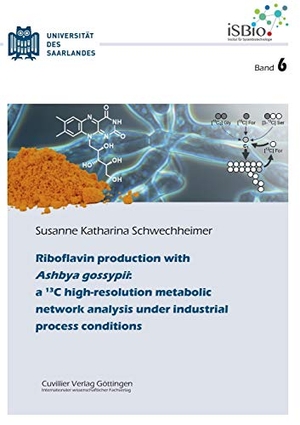Für statistische Zwecke und um bestmögliche Funktionalität zu bieten, speichert diese Website Cookies auf Ihrem Gerät. Das Speichern von Cookies kann in den Browser-Einstellungen deaktiviert werden. Wenn Sie die Website weiter nutzen, stimmen Sie der Verwendung von Cookies zu.
Cookie akzeptieren
Susanne Katharina Schwechheimer
Riboflavin production with Ashbya gossypii (Band 6)
- Cuvillier
- 2018
- Taschenbuch
- 174 Seiten
- ISBN 9783736998810
The fungus Ashbya gossypii is an important industrial producer of riboflavin, i.e. vitamin B2. Here, we developed and then used a highly sophisticated set- up of parallel 13C tracer studies with labeling analysis by GC/MS, LC/MS, 1D, and 2D NMR to resolve carbon fluxes and obtain a detailed picture of the underlying metabolism in the overproducing strain A. gossypii B2 during growth and riboflavin production from a complex industrial medium using vegetable oil as carbon source. Glycine was exclusively used as carbon-two ¿ but not carbon- one (C1) ¿ donor of the vitamin¿s pyrimidine ring due to the proven absence of a functional glycine cleavage system.
Mehr
Weniger
zzgl. Versand
in Kürze